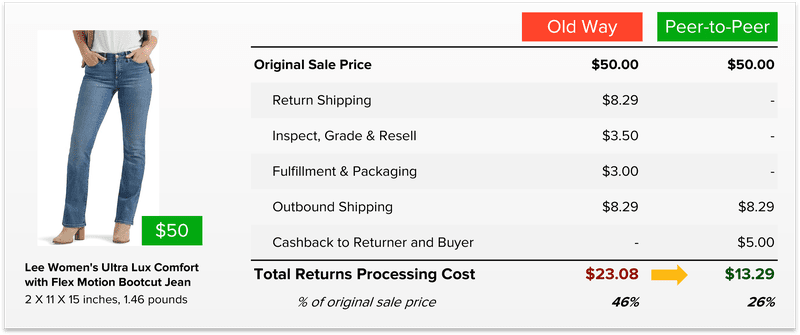The Best Shipping Software for Small Businesses | Cahoot

Last updated on February 13, 2025

In this article
 13 minutes
13 minutes
- Understanding Small Business Shipping Needs
- Understanding What Shipping Software Does for Small Businesses
- Benefits of Using Shipping Software
- Shipping Software Features Breakdown
- Future-Proofing the Shipping Solution is Vital for Small Businesses
- Shipping Software Security and Compliance
- Shipping Software Integration with Other Tools
- Cahoot is the Best Shipping Solution for Small Businesses
- Conclusion
- Frequently Asked Questions
In today’s aggressive ecommerce landscape, small businesses face the challenge of meeting growing customer demands while maintaining efficiency and cost-effectiveness. The right shipping software can change this rough wilderness into a smooth and straight road to success.
Understanding Small Business Shipping Needs
Before diving into specifics, it is crucial to evaluate the unique requirements and pain points for small businesses; starting out, many small businesses solve problems with manual work; only as things start to scale does it make sense to automate. Here are the key areas where shipping software can save small businesses time and money:
- Shipping Volume
Small businesses may get away with inefficient shipping processes at the start, but processing hundreds of orders a day requires different tools than handling just a few orders. As sales volume increases, inefficiencies in manual shipping processes slow everything down, increasing customer dissatisfaction. Conversely, Time and Cost savings compound with higher shipping volume automation, becoming more and more necessary as shipping volume increases. - International Shipping
Domestic-only shipping is much simpler compared to international shipping. International shipping requires customs documentation that needs to be often manually configured for products and appear properly on packaging labels. Some shipping software can automate this, while others require manual creation for each international order’s customs forms. - Non-Standard Product Characteristics
Products with special handling requirements (hazmat) or bespoke details benefit from shipping solutions that can handle complex packaging, mailers, and dunnage (packaging filler). If products vary widely in size or weight, then packaging inventory tracking and correct cartonization (packaging assignment) can save money on shipping. - Additionally, shipping software that integrates and automates the printing and processing of shipping labels and packing slips in bulk, even for non-standard products, can significantly impact the overall cost and efficiency of shipping operations.
- Ease of Setup and Use
Shipping software needs to be simple and easy to configure and use. Ease of use ensures the team can leverage the software’s features and prevents orders lingering in limbo between systems. - Technical Support Access
A critical but often overlooked factor in choosing shipping software is the level of support offered by the provider. Small businesses need solutions quickly and if the shipping software has an issue and technical support is slow to respond then operations can grind to a halt. Availability via multiple communication channels such as email, chat, SMS, and phone facilitates prompt resolution of issues. - Self Service Support Options
Access to tutorials, webinars, and FAQs help the team maximize the software’s capabilities and solve problems immediately instead of waiting hours or days for Support tickets to resolve. - Affordability
Small businesses often have tight budgets and have to maximize value. Good shipping software saves a small business money on shipping costs alone even before factoring in time savings and other multipliers. - Scalability and Integration
The shipping software should integrate smoothly with existing ecommerce platforms, accounting systems, and inventory management tools to minimize manual data entry and errors. The chosen solution must also scale with small business needs as the business grows; higher order volumes, additional sales channels, and increasing complexity can mean yesterday’s solutions no longer solve today’s problems. It is also important to choose shipping software that can handle multiple sales channels; ensuring compliance with specific labeling requirements for each marketplace.
Understanding What Shipping Software Does for Small Businesses
Fundamentally, shipping software integrates with ecommerce platforms to streamline shipping for orders. It doesn’t matter how great order management software can be if orders can’t ship! Shipping software is an integral platform for managing every aspect of ecommerce order fulfillment.
Here are some key features to look for in shipping software for ecommerce businesses:
- Integration with Ecommerce Platforms: Look for shipping software that integrates seamlessly with ecommerce platforms. Integration ensures smooth data flow and reduces manual data entry; the whole point of using shipping software is to help automate shipping; manual data entry means the shipping software is a side-grade, at best.
- Automated Order Import and Export: Ensure the shipping software can automatically import orders from the ecommerce platform, eliminating the need for manual data entry and reducing the risk of errors. Once orders are processed, shipping labels and tracking data need to pass back to the ecommerce platform automatically.
- Multi-Carrier Support: Choose shipping software that supports multiple carriers, comparing rates and services across different providers. This flexibility helps find the most cost-effective and reliable shipping options.
- Real-Time Tracking: Provide customers with real-time tracking updates and automated shipping notifications to enhance their experience. This transparency builds trust and keeps customers informed about their orders.
- Discounted Shipping Rates: Take advantage of discounted shipping rates and services offered by shipping software providers to reduce shipping costs. These discounts can significantly impact profitability and competitiveness.
For small businesses, the right shipping software is a gateway to professionalizing logistics without the need for a large, in-house team to handle orders every day.
Choosing the right solution can transform complex shipping operations into seamless workflows, empowering small businesses to compete with larger players. Choosing the wrong solution can complicate order processing and lead to mistakes and frustrated customers. This guide explores the essential aspects of selecting the shipping software that best fits small business needs.
Benefits of Using Shipping Software
Using shipping software can bring numerous benefits to a small business. Here are some of the most significant advantages:
- Increased Efficiency: Shipping software automates many necessary tasks, such as printing shipping labels, tracking packages, and updating shipping data. This saves time and reduces the risk of human error, allowing a small team to focus on other critical aspects of the business.
- Reduced Shipping Costs: By comparing shipping rates and services across multiple carriers, shipping software ensures the best deal for each order. This can significantly reduce shipping costs and improve the bottom line.
- Improved Customer Experience: With shipping software, small businesses can provide customers with real-time tracking updates, accurate delivery estimates, and automated shipping notifications. This transparency enhances customer satisfaction and loyalty while helping a small team stay on top of all customer-facing activity.
- Enhanced Data Analysis: Shipping software provides valuable insights into shipping data, helping identify trends, optimize shipping process, and make data-driven decisions. This can lead to more efficient operations and better strategic planning.
- Scalability: As a small business grows, the right shipping software can handle increased shipping volumes and complexity with ease. This scalability ensures that shipping operations remain efficient and effective, even as business expands.
Shipping Software Features Breakdown
When evaluating shipping software consider both the immediate and long-term needs for the business. There is a diverse range of shipping software options available to meet various business needs, emphasizing the importance of understanding specific shipping requirements.
- Multi-Carrier Integration: A platform that connects with multiple carriers enables comparison between rates to select the most cost-effective option for each shipment. The more range in the product catalog size and weights, the more important managing multiple carriers becomes. If all products are the same size and weight (playing card games, different colored shirts, etc.) then the majority of shipments will use a single carrier service.
- Rate Comparison Tools: Real-time rate comparison between different carriers and services help optimize shipping costs while maintaining service quality by using the best method that gets to the customer on time. However, rate comparison is often manual. Comparatively, Cahoot provides automatic 0-click rate shopping and label generation. If the business focuses on international or specific domestic areas, relying solely on major carriers may not be sufficient and not all shipping software supports niche providers.
- Automated Label Creation: Streamlining the label creation process reduces manual work, minimizes errors, and accelerates fulfillment. Shipping volume is a force multiplier for label automation, as saving 10 seconds per label can result in hours of time savings per day. Cahoot is 21x faster than ShipStation.
- Tracking and Notifications: Providing customers with real-time shipment updates improves transparency and satisfaction. Managing customer expectations and clearly conveying the latest information means customers are much more understanding of carrier delays or other issues.
- Packaging Management and Assignment: Running out of boxes means higher costs as the wrong box is used, increasing shipping costs. Automatically assigning the correct package for each item is also important for orders requiring discreet packaging.
- Return Management: Simplified returns processes enhance customer loyalty and save time for the team. Returns are an unavoidable part of online retail and return rates are steadily rising.
Future-Proofing the Shipping Solution is Vital for Small Businesses
As business grows, shipping needs will evolve. Choosing scalable software that accommodates increased shipping volumes, additional sales channels, and complex logistics is essential. Look for solutions that can meet not just current needs but also future growth.
- Handle seasonal surges without compromising performance.
- Support expansion into new markets or products.
- Handle multiple inventory and orders across multiple warehouse locations.
- Integrate with additional tools and advanced capabilities, such as advanced analytics or CRM systems.
Future-proofing software choice ensures it remains a valuable asset as business scales instead of becoming an albatross.
Advanced Capabilities for Growing Businesses
As business scales, advanced features can add significant value.
- Artificial Intelligence (AI): AI-powered tools optimize warehouse and product organization, predict delivery delays, and offer process improvement insights.
- Branding: Custom shipping labels, tracking pages, packing slips, and return portals are all points of customer interaction to reiterate and reinforce brand value.
- Customization Options: Businesses with unique needs may require solutions with robust customization capabilities to avoid frequent platform changes.
- Analytics and Reporting: Detailed reports on shipping costs, delivery performance, and customer feedback help refine strategies and improve margins. These reports enable businesses to optimize carrier choices and leverage discounted rates to further reduce shipping costs.
- Omnichannel Integration: For businesses selling across multiple platforms, seamless integration with ecommerce and point-of-sale (POS) systems ensures consistency and prevents errors and duplication of work.
Shipping Software Security and Compliance
Shipping software security and compliance are critical to protecting business and customer data. Here are some key considerations:
- Data Encryption: Ensure the shipping software uses robust data encryption methods to protect sensitive information, such as customer addresses and payment details. This encryption safeguards data from unauthorized access.
- Compliance with Regulations: Verify that the shipping software complies with relevant regulations, such as GDPR, HIPAA, and PCI-DSS. Compliance ensures that the business adheres to legal standards and protects customer privacy, which in turn protects from liability and customer loss of trust.
- Secure Payment Processing: Choose shipping software that integrates with secure payment gateways, such as PayPal or Stripe. Secure payment processing protects customers’ financial information and builds trust.
- Access Controls: Implement access controls to restrict user access to sensitive data and shipping software features. This ensures that only authorized personnel can access critical information.
- Regular Security Updates: Ensure the shipping software provider regularly updates and patches their software to prevent security vulnerabilities. Regular updates keep systems secure and protect against constantly emerging threats.
Shipping Software Integration with Other Tools
Shipping software integration with other tools and systems is essential to streamline shipping processes and improve efficiency. Here are some key integrations to consider either as an established part of the shipping software or an integration with 3rd party systems:
- Ecommerce Platforms: Integrated shipping software with ecommerce platform ensures automatic order import and fulfillment. This integration reduces manual work and ensures accurate order processing.
- Order Management Systems: Integrated shipping software with order management systems streamline order processing and tracking. This integration helps manage orders more efficiently and reduces errors.
- Inventory Management Systems: Integrated shipping software with inventory management systems ensure accurate inventory levels and prevent overselling. This integration helps maintain stock accuracy and improves customer satisfaction.
- Accounting and Bookkeeping Software: Integrated shipping software with accounting and bookkeeping software automates shipping cost tracking and invoicing. This integration simplifies financial management and ensures accurate record-keeping.
- Customer Relationship Management (CRM) Software: Integrated shipping software with CRM software provides customers with real-time shipping updates and enhances their experience. This integration helps build stronger customer relationships and improves customer communication.
Cahoot is the Best Shipping Solution for Small Businesses
Cahoot’s next generation shipping software comes with end-to-end intelligent automation. When you receive an order, Cahoot intelligently compares multiple warehouse locations, inventory levels, carriers and shipping services to automatically pick the cheapest label that will meet the delivery SLA committed to the customer, up to 21x faster than our competitors.
See why people switch to Cahoot:
Conclusion
Selecting the best shipping software requires a balance of cost, functionality, and scalability. Begin with a clear understanding of operational needs; identify pain points, non-negotiable necessities, and expected growth trajectory. Evaluate options based on the shipping software’s features, integrations, and long-term value. Trial periods, when available, provide an excellent opportunity to test compatibility and performance without fully committing.
By investing in the right solution, small businesses can streamline operations, reduce costs, and deliver an exceptional customer experience. In the competitive ecommerce market, the right shipping software isn’t just a tool. It’s a strategic advantage.
Frequently Asked Questions
- How does shipping software work?
Shipping software connects with order management systems; orders come from the order management system into the shipping software. Shipping labels are created and printed in the shipping software, and tracking information is sent back to the order management system. - What is the best shipping method for small businesses?
“Best” for small businesses is usually defined as cheapest. This mainly depends on the size and weight of products. Cahoot can help find the best shipping methods for every business. - Is free shipping software worth it for small businesses?
Often, no. While free shipping software may initially seem appealing, it often comes with limitations such as restricted features, higher rates for printing shipping labels, or per-transaction fees. Paid solutions, on the other hand, typically offer robust functionality, better support, and cost-saving tools like rate shopping and automation which end up saving small businesses money.

Up to 64% Lower Returns Processing Cost


